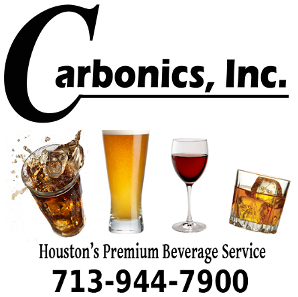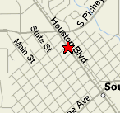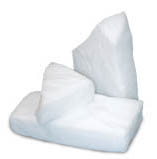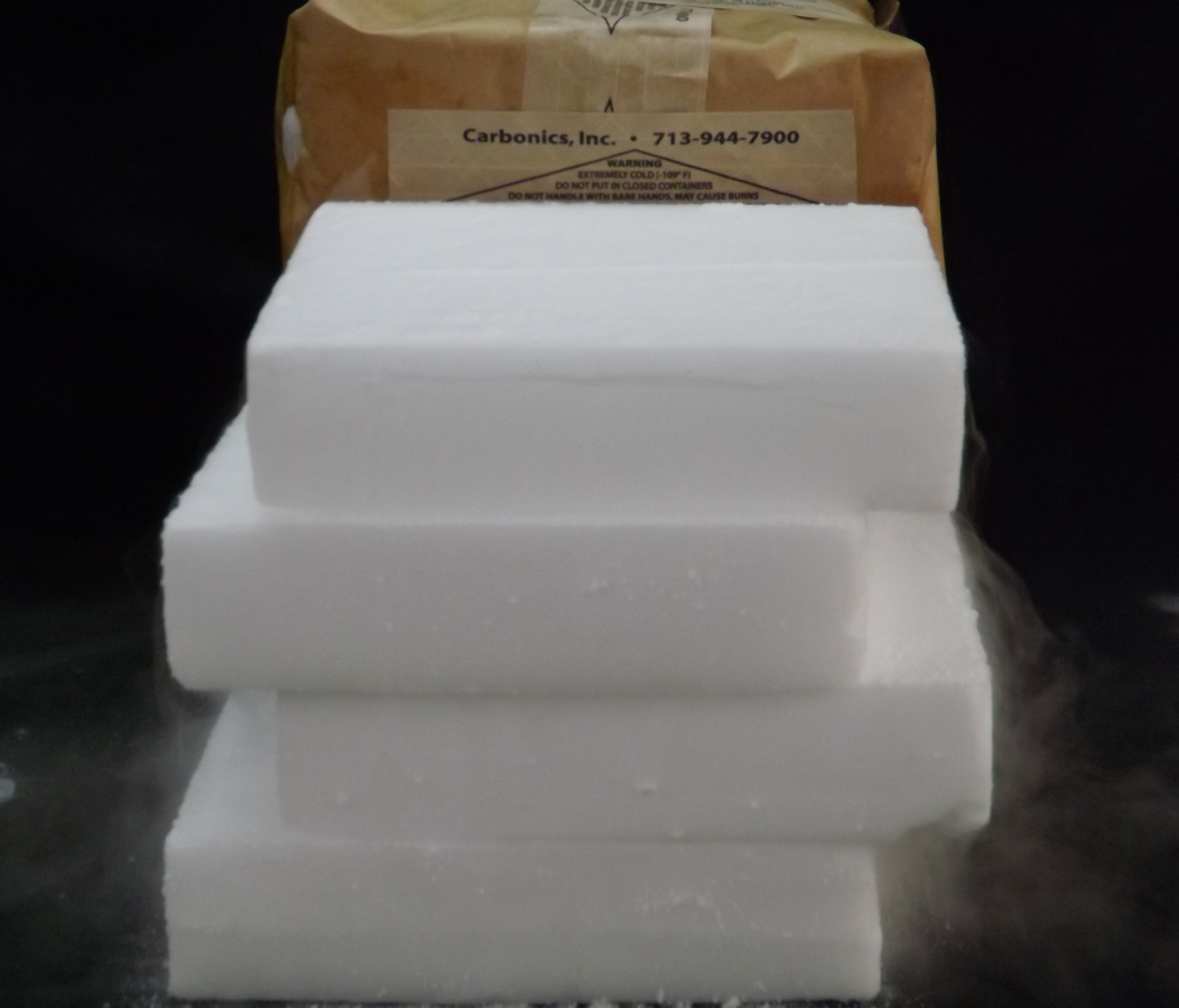
713-944-7900
Welcome To Carbonics Inc., Houston's Dry Ice and Beverage specialists
Carbonics, Inc. is the Greater Houston Area’s number one source for dry ice, CO2, nitrogen, helium, beer gas, syrups
and beverage equipment sales & service!
Here are some Frequently Asked Questions about Beverage Equipment

M-F 7:30AM - 4:00PM
Installation
Repairs
What are your terms and conditions?
As of October 2024 the current terms are
1. Sole and Exclusive Remedy: Customer's sole and exlusive remedy under this transaction is limited to repair and replacment of any defective gas or equipment sold, within the equipment's warranty period. Such replacement does not include labor costs and other costs incurred by Carbonmics Inc "Vendor" in diagnosis, repair, removal, installation, or shipment of defective equipment.
2. Payment by Customer: Customer shall pay for the goods upon receiving equipment or services. For longer terms apply for account credit. Late payments may be subject to a late fee, and insufficient checks are subject to a $50 administrative fee.
3. Authority of Salesman: No Salesman or agent of Vendor has the right to change in any manner the conditions of sale and shipment in this transaction.
4. Limitation of Damages: Vendor is not responsible and Customer agrees to hold Vendor harmless for any special, indirect, direct, or consequential property damage arising out of, or as the result of the use, misuse, or loss of the goods sold under this transaction.
5. Right to set payment terms: Notwithstanding any previous credit, the Vendor may at any time demand payment on delivery.
6. Deposit Return: Customer must request deposits be returned within 45 days of returning all Carbonics cylinders or other leased property.
7. Risk of Non-performance: All orders are accepted subject to strikes, labor troubles, fires, hurricanes, floods, delays, accidents, shortage of drivers or trucks, or other unforseen problems. Vendors promises to make all good-faith best efforts to fulfiill all promised deliveries or services.
8. Risk of Loss: Vendor shall bear the risk for damages to or destruction of the goods until delivery by it to the customer.
9. No Implied Warranty: Vendor excludes and disclaims any implied warranty of merchantability with respect to the specific fitness or purpose of any of the goods sold.
10. Entire Agreement: This agreement supersedes any and all other agreements made verbally or in writing with respect to the matters hereto and contains all of the covenants and agreements between the parts with respect to said matters.
11. Governing Law: This agreement shall be governed by and construed by the laws of the State of Texas
12. Venue: Customer agrees to pay Vendor at P.O. Box 87828, Houston, TX 77287, Harris County, Texas, or any other place which may be designated from time to time by the Vendor.
13. Claims: Except for sales of Dry Ice which is specifically excluded due to its nature of constant sublimation. Customer must notify Vendor in writing within 10 days of receiving any goods or equipment that customer believes is defective in any respect. Failure to notify Vendor within 10 days will be construed as conclusive evidence that Vendor has satisfactorily performed.
14. Successors and Assigns: This agreement shall inure to the benefit of and bind the successors and assigns of Customer and Vendor
15. Refusal of Service: Vendor reserves the right to refuse service to anyone or any company at any time for any reason
16. Attorney's Fees: In the event Customer defaults under this transaction and it becomes necessary for Vendor to employ an attorney to enforce this transaction or recover monies due under this transaction, customer agrees to pay all reasonable attorney's fees incurred by Vendor in the enforcement of payment.
17. Termination upon Event: This transaction may be terminated by Vendor at its option and without prejudice to any other remedy to which it may be entitled at law in in equity, or elsewhere under this agreement by giving written notice of termination to customer if the latter should (a) be adjudicated of a voluntary or involuntary bankruptcy; (b) Institute or suffer to be instituted any proceeding for a reorganization or rearrangement of its affairs; (c) Make an assignment for the benefit of creditors: (d) Become insolvent or have a receiver of his assets or property appointed; (e) Allow any noney judgement against him to remain unsatisified for a period of 30 days or longer; or (f) Remain in default in the performance of any obligation or payment of any indebtdeness under this transaction for a period of 30 days or longer.
18. Taxes: All increases in, and all new taxes excises of other government charges hereafter imposed on production, sales of transportation imposed on production, sales of transportation of the goods sold hereunder which Vendor may be required to pay, shall become a part of the price payable by the customer.
19. Cumulative Remedies: All rights and remedies herein granted to Vendor and any rights and remedies Vendor may have at law, are cumulative, not alternative, and the exercise of one such right or remedy by Vendor shall be without prejudice to the enforcement of any other right or remedy authorized by law or this transaction.
20. Service Charge: Amounts due Vendor are subject to a service charge of 1.5% per month (18% annually) if not paid within 30 days.
21. Definition: Carbonics Inc. may be known as Customer's "Vendor" for goods and services and/or Customer's "Lessor" for equipment rentals.
How much soda does a Bag-in-Box syrup make?
One (1) 5-gallon Bag-in-Box syrup will yield approximately 30 gallons of soda (3,840 ounces)
One (1) 3-gallon Bag-in-Box syrup will yield approximately 18 gallons of soda (2,304 ounces)
How long will a CO2 cylinder last?
One (1) 20 lb. CO2 cylinder will yield approximately 90 gallons of soda;
One
(1) 10 lb. CO2 cylinder will yield approximately 45 gallons of
soda.
One
(1) 20 lb. CO2 cylinder will push approximately 16 kegs
(full-sized / half-barrel) of beer.
How do the Rentals Work?
You determine how much CO2 you will likely need, and
pick a cylinder size that will work for you.
let's say, for example, you have a C-store and decide you need
20lb Cylinders. These are about 28" tall, 9" in diameter, and
when
full they weigh about 44 lbs (20 lbs of CO2).
Next you pay a deposit for each cylinder. There
is also a monthly rental fee of a few dollars per month, per
cylinder, depending on the size of the cylinder.
This may be billed quarterly or annually.
Finally there is the cost of the gas itself.
If you are on a delivery route, then someone will stop
by each month and swap out your empty cylinders for fulls. Let's
say you have 3 20lb'ers
and 2 of them are empty. You would receive 2 fulls, we would
pick up the 2 empties. You would be charged for the gas for the
2
cylinders, plus a fee that covers fuel and Federal Hazards
Material Compliance fees. Your monthly rental charges will be
billed separately, either quarterly or annually.
What is the syrup to water ratio?
Regular sugar syrups are typically 5 parts water to 1 part syrup, a 5:1 ratio. Other ratios are 4:1, 3:1, 6:1. Be sure to read the label for each product.
What is the difference between “Pre-Mix Syrup” and “Post-Mix Syrup (BIB)?”
Pre-mix is soda which is ready to drink. It is the product that is in a bottle or a can, but can also be prepared in large 5-gallon containers known as “figals.” Those containers are bulky stainless steel refillable tanks at about the same cost as a can or bottle soda product.
Post Mix is the combination of BIB syrup AND carbonated water mixed together at the nozzle. An average 5-gallon name brand syrup is approximately $65 and will yield approximately 30 gallons of product. The Post Mix system is where the real cost savings and profits are to the seller.
What does the carbonator do? Do I need one for my Fountain soda water dispenser?
The carbonator combines CO2
gas and water together giving you carbonated
water (sometimes called
seltzer water or soda water).
Do I need a water filter for my fountain machine?
YES! The quality of your water will determine whether or not you need a water filter. The long term performance of your beverage dispensing equipment will be affected by the quality of your water. If your water tastes “funny” or displeasing, then your soda will also taste “funny” or displeasing. Remember, your drink is 87% water, so good quality water will produce a much better product than poor quality water. The syrup and carbonation cannot disguise water that tastes bad. You definitely don't want your "hard" water to leave calcium deposits inside your fountain machine, eventually rendering it nothing but scrap!
Do I need a water regulator to install a fountain machine?
YES! A water regulator chokes down the flow in the event your water pressure is in excess of 50 psi. In many places your water pressure will fluctuate as people nearby use more or less water throughout the day. This is terrible for soda systems, because it will cause your ratio of syrup to water to change. The best way to prevent this and guarantee a consistent final product for the customer is to use a water booster to artificially boost your water pressure higher, then a water regulator to reduce it to exactly 50 psi. In this way, during periods of high pressure there is no problem because the water regulator will not allow the line pressure to exceed 50, and in periods of low water pressure, the water booster keeps the pressure higher so that your equipment doesn't try to operate with too little water. Still not sure? Let us come give you a free estimate to install your equipment.
Do I need a water booster to install a fountain machine?
A water booster is needed in the event your water pressure is less than 40 psi. This is important because you don’t want to burn up your carbonator from low water pressure.
What size water line is required to run a fountain machine?
Beverage dispensing systems require a water line of 3/8” to ½” and never the small ¼” sized water line. This is important because you don’t want to burn up your carbonator from not having enough water.
How long will my Dry Ice last?
Dry Ice needs to be kept
below -109 degrees Fahrenheit or it will begin to turn into
gas/vapor. So, if you don't have a freezer capable of
-110 F then the best thing you can do to preserve it is
purchase a Dry-Ice specific Cooler (some of which we sale),
and fill the cooler completely with Dry Ice, then close the
lid and do not open it again. Each time you open the
lid, it's like Blasting the Dry Ice with extreme heat.
If the room is 75 degrees, then you've just exposed the Dry
Ice to 185 degrees of heat. (-110+75). It's not terribly
useful to just have Dry Ice sit in a container and not use it
for anything, granted. So in real life, pack whatever
cooler you have as full as possible, so that as little air
gets in each time you open the lid. take up the extra
space with cardboard, bubble wrap, or whatever. Plan to
open your cooler as little as possible and plan to lose 10-15
lbs of Dry Ice per day under those conditions.
Need your cooler to remain
cold for three days? Pack it with 30 lbs of Dry
Ice. If it's opened several times per day, on day 3
there may be no physical Dry Ice left, but the items inside
will still be frozen cold.
* Do not put your food
directly on the Dry Ice, the Ice will freezer burn the food
quickly. Instead Separate the food from the Ice with
cardboard, bubble wrap, or something to help insulate the food
from direct contact.
 |
|
 |